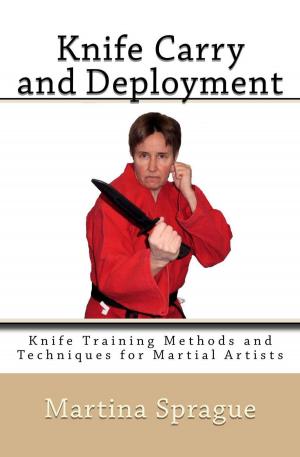Best Swordsman, Best Sword: Samurai vs. Medieval Knight: The Classic Debate
Nonfiction, History, Military, Weapons, Other, Medieval| Author: | Martina Sprague | ISBN: | 9781386911173 |
| Publisher: | Martina Sprague | Publication: | February 13, 2018 |
| Imprint: | Language: | English |
| Author: | Martina Sprague |
| ISBN: | 9781386911173 |
| Publisher: | Martina Sprague |
| Publication: | February 13, 2018 |
| Imprint: | |
| Language: | English |
If you are looking for an instructional manual full of step-by-step illustrations for learning Japanese and European swordsmanship, do not buy this book! This book does not tell you everything you need to know about specific techniques and does not contain hundreds of pictures detailing each step involved in attacking and defending with the sword. Nor is it a suitable reference manual for arms collectors. Like my previous books on edged weaponry, the focus is critical thinking through historical analysis.
Our purpose is to pit a samurai against a medieval knight to determine who proved to be the better swordsman, who wielded the better sword, and who came from the superior culture. Our analysis will encourage you to think about the many nuances of swordsmanship in different terrains and cultural settings, and how a Japanese samurai might have acted and reacted had he crossed swords with a European medieval knight, and vice versa. It is of interest to those who have some experience practicing with the sword, but primarily to those who like to ponder the use of the sword in a historical context; neither for sports or to settle points of honor, nor for health or personal fulfillment, but on the battlefield where the objective was to kill the opponent. The intent is to discern relationships between seemingly separate histories and lead us toward a broader horizon regarding historical swordsmanship.
To reach our objective, we will discuss practical sword designs and their purposes, sword dynamics and the principles of physics, and common tactics of offense and defense. As we proceed, consider that in martial arts as practiced today, many combat techniques and forms are overly ritualized and complex. In sword combat to the death, by contrast, the straightest and fewest moves possible were used to reach the objective. The tactics that the samurai and medieval knight chose were not about looking and feeling good, but about getting it done. They picked up the sword in defense of their king, master, or country, and were prepared to fight to the death.
If you are looking for an instructional manual full of step-by-step illustrations for learning Japanese and European swordsmanship, do not buy this book! This book does not tell you everything you need to know about specific techniques and does not contain hundreds of pictures detailing each step involved in attacking and defending with the sword. Nor is it a suitable reference manual for arms collectors. Like my previous books on edged weaponry, the focus is critical thinking through historical analysis.
Our purpose is to pit a samurai against a medieval knight to determine who proved to be the better swordsman, who wielded the better sword, and who came from the superior culture. Our analysis will encourage you to think about the many nuances of swordsmanship in different terrains and cultural settings, and how a Japanese samurai might have acted and reacted had he crossed swords with a European medieval knight, and vice versa. It is of interest to those who have some experience practicing with the sword, but primarily to those who like to ponder the use of the sword in a historical context; neither for sports or to settle points of honor, nor for health or personal fulfillment, but on the battlefield where the objective was to kill the opponent. The intent is to discern relationships between seemingly separate histories and lead us toward a broader horizon regarding historical swordsmanship.
To reach our objective, we will discuss practical sword designs and their purposes, sword dynamics and the principles of physics, and common tactics of offense and defense. As we proceed, consider that in martial arts as practiced today, many combat techniques and forms are overly ritualized and complex. In sword combat to the death, by contrast, the straightest and fewest moves possible were used to reach the objective. The tactics that the samurai and medieval knight chose were not about looking and feeling good, but about getting it done. They picked up the sword in defense of their king, master, or country, and were prepared to fight to the death.















